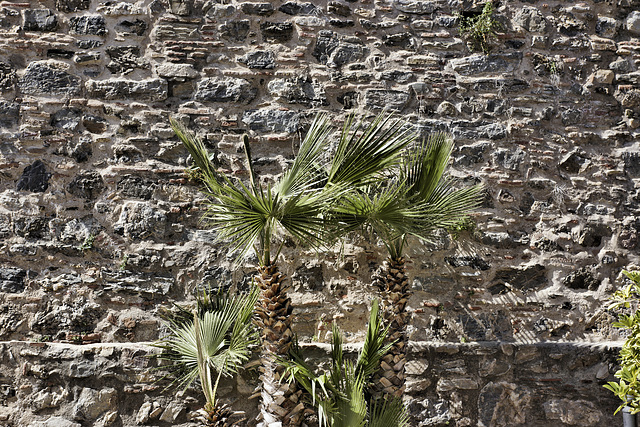Jonathan Cohen's photos
Old Man Winter – Calle Alcazabilla, Málaga, Andalucía, Spain
An allegorical statue depicting winter. The work of the Malagueño sculptor Adrián Risueño Gallardo (1896-1966).
Ayuntamiento Building, Take #2 – Viewed from the Gibralfaro Castle, Málaga, Andalucía, Spain
Ayuntamiento Building, Take #1 – Viewed from the Gibralfaro Castle, Málaga, Andalucía, Spain
They Must be Tauruses – The Bull Ring Viewed from the Gibralfaro Castle, Málaga, Andalucía, Spain
City Skyline with the Cathedral – Viewed from the Gibralfaro Castle, Málaga, Andalucía, Spain
The Coast is Clear – Viewed from the Gibralfaro Castle, Málaga, Andalucía, Spain
Stonewalling – Gibralfaro Castle, Málaga, Andalucía, Spain
Mount Gibralfaro, Spanish: Monte Gibralfaro, is a hill located in Málaga in southeast Spain. It is a 130 meter high foothill of the Montes de Málaga, part of the Cordillera Penibética. At the top of the hill stands the Castle of Gibralfaro overlooking Málaga city and the Mediterranean Sea.
Gibralfaro has been the site of fortifications since the Phoenician foundation of Málaga city, circa 770 BCE. The location was fortified by Calif Abd-al-Rahman III in 929CE. While, At the beginning of the 14th century, Yusuf I of the Kingdom of Granada expanded the fortifications within the Phoenician lighthouse enclosure and erected a double wall to Alcazaba. The name is said to be derived from Arabic, Jbel, rock or mount, and Greek the word for light, Jbel-Faro, meaning "Rock of Light". The castle is famous for its three-month siege in 1487 by the Catholic monarchs, King Ferdinand and Queen Isabella, which ended when hunger forced the Malagueños to surrender. The most visible remains of the Castle today are the solid ramparts rising above the pines. In the Centro de Interpretación de Gibralfaro (Gibralfaro Interpretation Center) in the former gunpowder arsenal of the Castle is a little museum that shows the castle’s history over the centuries since the Reconquest. The castle was used as a military base until 1925.
Cameos – Calle Álamos, Málaga, Andalucía, Spain
Jump to top
- ipernity © 2007-2025
- Help & Contact
|
Club news
|
About ipernity
|
History |
ipernity Club & Prices |
Guide of good conduct
Donate | Group guidelines | Privacy policy | Terms of use | Statutes | In memoria -
Facebook
Twitter










